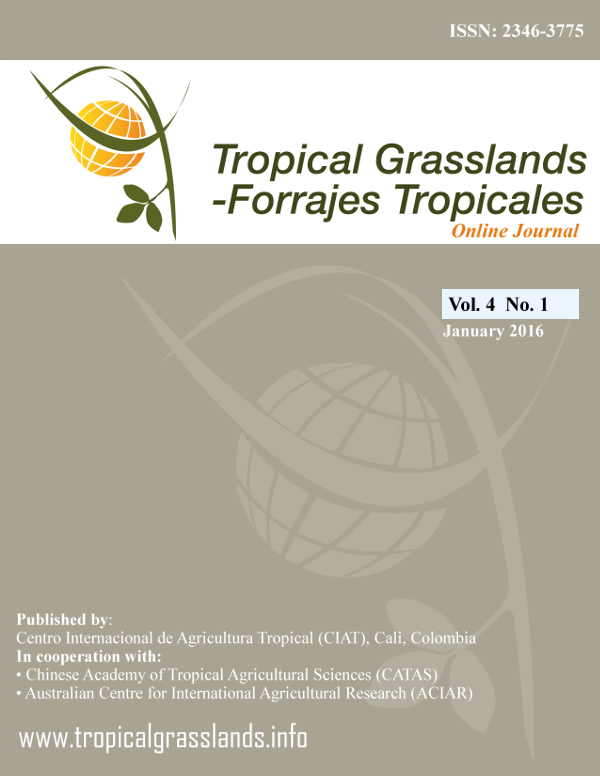Carbon dynamics in an <i>Imperata</i> grassland in Northeast India
DOI:
https://doi.org/10.17138/tgft(4)19-28Abstract
Carbon stocks and soil CO2 flux were assessed in an Imperata cylindrica grassland of Manipur, Northeast India. Carbon stocks in the vegetative components were estimated to be 11.17 t C/ha and soil organic carbon stocks were 55.94 t C/ha to a depth of 30 cm. The rates of carbon accumulation in above-ground and below-ground biomass were estimated to be 11.85 t C/ha/yr and 11.71 t C/ha/yr, respectively. Annual soil CO2 flux was evaluated as 6.95 t C/ha and was highly influenced by soil moisture, soil temperature and soil organic carbon as well as by C stocks in above-ground biomass. Our study on the carbon budget of the grassland ecosystem revealed that annually 23.56 t C/ha was captured by the vegetation through photosynthesis, and 6.95 t C/ha was returned to the atmosphere through roots and microbial respiration, with a net balance of 16.61 t C/ha/yr being retained in the grassland ecosystem. Thus the present Imperata grassland exhibited a high capacity to remove atmospheric CO2 and to induce high C stocks in the soil provided it is protected from burning and overgrazing.
Keywords: Above-ground biomass, below-ground biomass, carbon stocks, carbon storage, net primary productivity, soil CO2 flux.
DOI: 10.17138/TGFT(4)19-28
Author Biography
Amrabati Thokchom, Department of Life Sciences, Manipur University, Imphal, India.
Department of Life Sciences
Manipur University
Imphal-795003
Manipur




